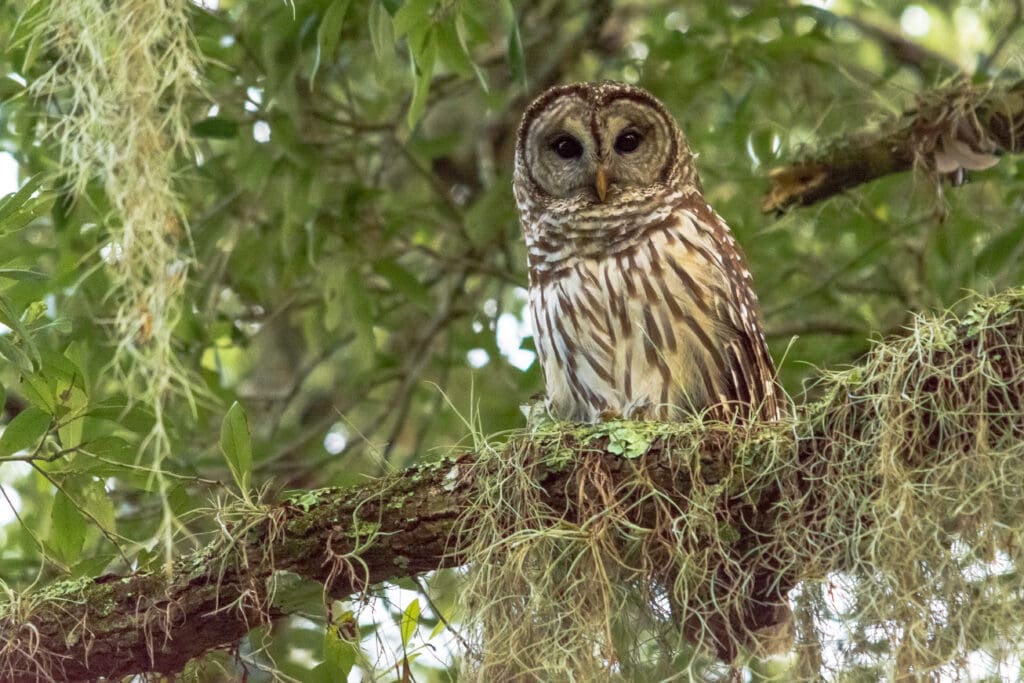The Barred Owl is heard more often than it is seen. Like many other owls, its call is commonly used as an identifier thanks to its ability to keep a relatively low profile as it hunts at night. In fact, the “Who cooks for you? Who cooks for you-all?” cry of the Barred Owl is one of the most well-known bird call mnemonics in the hobby. It is an easily recognizable call that is likely familiar to many living in the eastern half of the United States. But the Barred Owl does not seem content to contain itself to this region.
Related Article: Spring is Swooping Season for Australia’s Magpies
Despite historically dwelling in the eastern U.S. and a wide swathe of Canada, Barred Owls have been colonizing the Pacific Northwest since the 1950s, making it all the way down through much of Northern California by 1976. And they aren’t stopping.
A breeding pair of Barred Owls were spotted in Grand Teton National Park in Wyoming this last spring. The pair was the state’s first breeding pair of Barred Owls, a milestone that may not be as exciting as it sounds. As charming and beloved as Barred Owls are in their historical range, the arrival of a non-native species almost always raises alarm bells in conservation circles. For the Barred Owl, there is reason to worry.
The Barred Owl’s expansion into the Pacific Northwest has had serious consequences for their lookalike cousins, the Spotted Owl. Spotted Owls are more shy and less aggressive than Barred Owls. This means that in habitats where Barred Owls are expanding, Spotted Owls are generally shrinking, unable to compete with the Barred Owl’s competitive might. This issue has become severe enough, at times, to lead to the culling of Barred Owls in order to reduce competition and allow Spotted Owls to regain control of their ecological niche.
This brings us back to Wyoming. For local birders, the sighting of an iconic new owl may seem like good news at first glance, but the Barred Owl is stubborn and seemingly quite successful and colonizing new territories. Spotted Owls are not endemic to the Grand Teton National Park area, so there is no worry that Barred Owls could drive them out. For now, ecologists are taking a “wait and see” approach to the little family of invaders. Questions do remain regarding Wyoming’s native owls, such as the Great Gray Owl, and how the Barred Owl’s competitive success could impact their numbers.
For better or for worse, if you listen patiently to the night sounds of Grand Teton National Park tonight, you might just hear the “Who cooks for you?” call of Wyoming’s very first home-grown Barred Owl.
Popular Article: Maine’s Puffin Population is on the Mend

